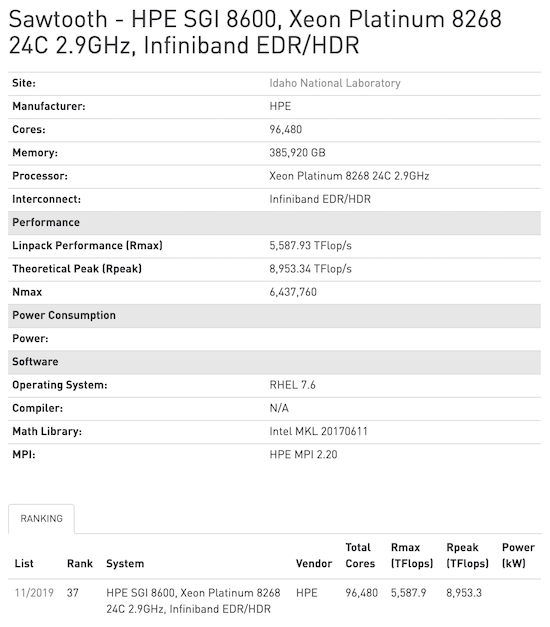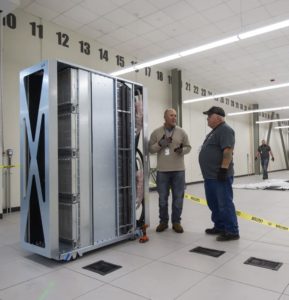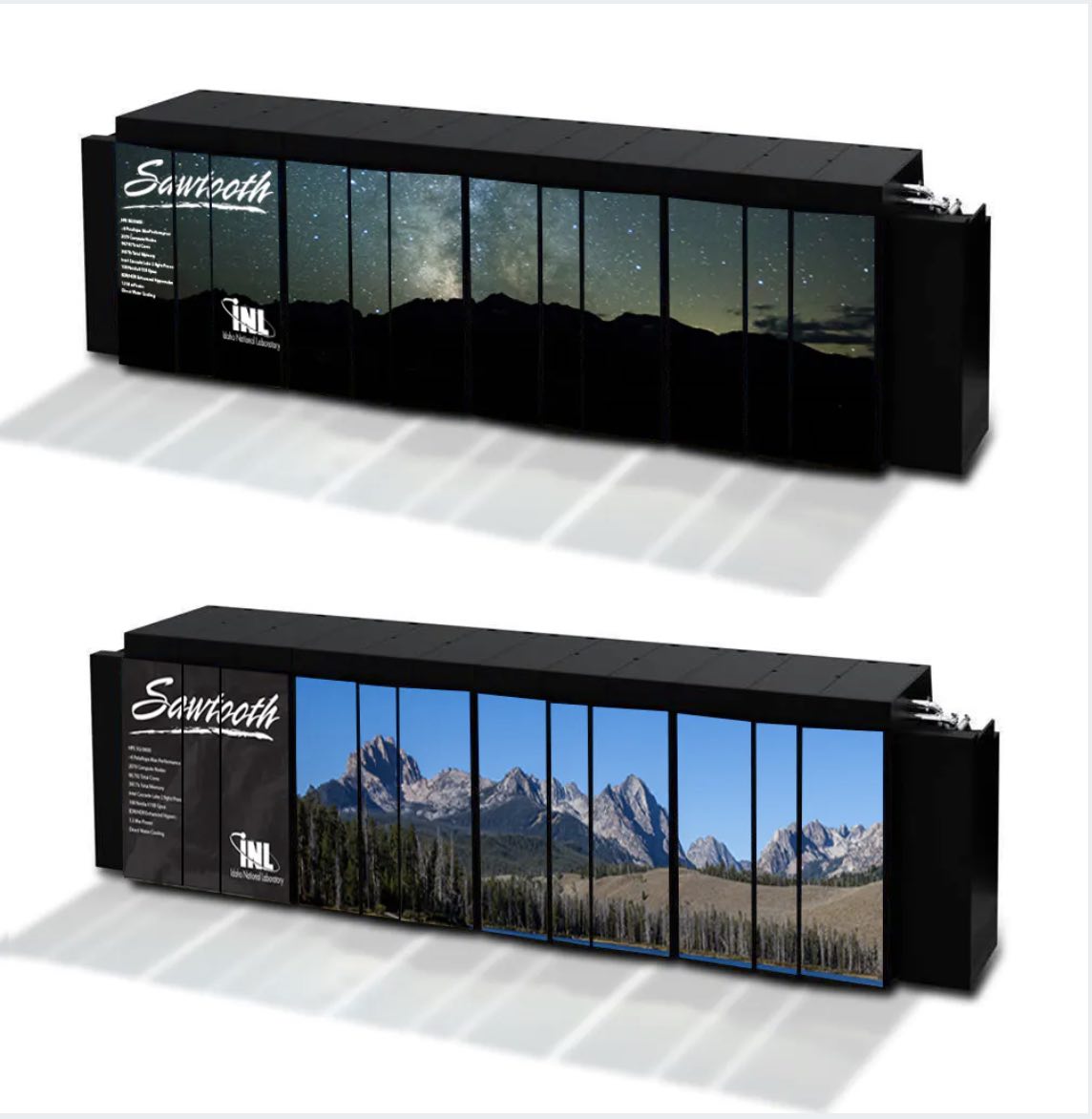 A powerful new supercomputer arrived this week at Idaho National Laboratory’s Collaborative Computing Center. The machine has the power to run complex modeling and simulation applications, which are essential to developing next-generation nuclear technologies.
A powerful new supercomputer arrived this week at Idaho National Laboratory’s Collaborative Computing Center. The machine has the power to run complex modeling and simulation applications, which are essential to developing next-generation nuclear technologies.
Named after a central Idaho mountain range, Sawtooth arrives in December and will be available to users early next year. The $19.2 million system ranks #37 on the 2019 Top500 fastest supercomputers in the world. That is the highest ranking reached by an INL supercomputer. Of 102 new systems added to the list in the past six months, only three were faster than Sawtooth.
The boost in computing power will enable researchers at INL and elsewhere to simulate new fuels and reactor designs, greatly reducing the time, resources and funding needed to transition advanced nuclear technologies from the concept phase into the marketplace.
Supercomputing reduces the need to build physical experiments to test every hypothesis, as was the process used to develop the majority of technologies used in currently operating reactors. By using simulations to predict how new fuels and designs will perform in a reactor environment, engineers can select only the most promising technologies for the real-world experiments, saving time and money.
 Workers begin setting up the Sawtooth supercomputer in the data center of INL’s Collaborative Computing Center.
Workers begin setting up the Sawtooth supercomputer in the data center of INL’s Collaborative Computing Center.
INL’s ability to model new nuclear technologies has become increasingly important as nations strive to meet growing energy needs while minimizing emissions. Today, there are about 450 nuclear power reactors operating in 30 countries plus Taiwan. These reactors produce approximately 10% of the world’s electricity and 60% of America’s carbon-free electricity. According to the World Nuclear Association, 15 countries are currently building about 50 power reactors.

Workers begin setting up the Sawtooth supercomputer in the data center of INL’s Collaborative Computing Center.
John Wagner, the associate laboratory director for INL’s Nuclear Science and Technology directorate, said Sawtooth plays an important role in developing and deploying advanced nuclear technologies and is a key capability for the National Reactor Innovation Center (NRIC).
In August, the U.S. Department of Energy designated INL to lead NRIC, which was established to provide developers the resources to test, demonstrate and assess performance of new nuclear technologies, critical steps that must be completed before they are available commercially.
With advanced modeling and simulation and the computing power now available, we expect to be able to dramatically shorten the time it takes to test, manufacture and commercialize new nuclear technologies,” Wagner said. “Other industries and organizations, such as aerospace, have relied on modeling and simulation to bring new technologies to market much faster without compromising safety and performance.”
Sawtooth is funded by the DOE’s Office of Nuclear Energy through the Nuclear Science User Facilities program. It will provide computer access to researchers at INL, other national laboratories, industry and universities. Idaho’s three research universities will be able to access Sawtooth and INL’s other supercomputers remotely via the Idaho Regional Optical Network (IRON), an ultra-high-speed fiber optic network.
This system represents a significant increase in computing resources supporting nuclear energy research and development and will be the primary system for DOE’s nuclear energy modeling and simulation activities,” said Eric Whiting, INL’s division director for Advanced Scientific Computing. “It will help guide the future of nuclear energy.”
Sawtooth, with its nearly 100,000 processors, is being installed in the new 67,000-square-foot Collaborative Computing Center, which opened in October. The new facility was designed to be the heart of modeling and simulation work for INL as well as provide floor space, power and cooling for systems such as Sawtooth. Falcon and Lemhi, the lab’s current supercomputing systems, also are slated to move to this new facility.




